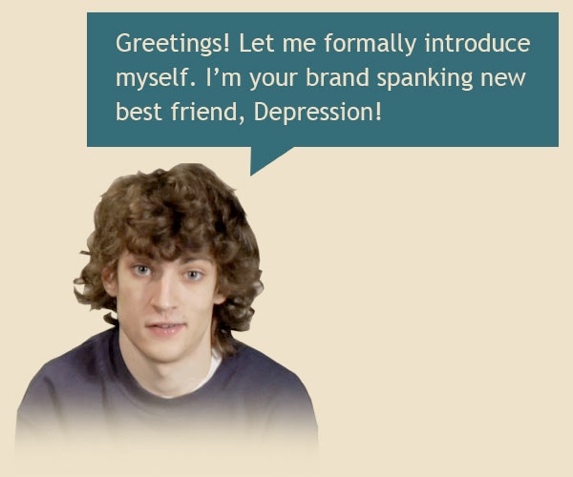Latest Public Service Radio Minute
Loss of EmploymentLoss of Employment, MP3, 1.3MB
Listen to or download all our PSAsSupport Our Work
Please donate so we can continue our work to reduce the stigma of psychiatric illness, encourage research, and support educational activities for behavioral health professionals and the public. Ways you can donate and help are on our Support and Donations page. Thank you!
More InfoLatest News Around the Web
Half Hour Of Vigorous Exercise May Help Reduce Symptoms Of GAD, Small Study Indicates
HealthDay (6/13, McKiski) reports research indicates that “just a half hour of vigorous exercise” may help reduce the symptoms of Generalized Anxiety Disorder (GAD). The findings of the 35-participant study were published in the May issue of the journal Medicine & Science in Sports & Exercise.
Related Links:
— “Workouts: A Prescription to Ease Severe Chronic Anxiety?, “Kayla McKiski, HealthDay, June 13, 2019
Heart attack survivors with chronic mood disorders may be more likely to die prematurely
Reuters (6/12, Rapaport) reports, “Heart attack survivors with chronic mood disorders may be more likely to die prematurely than their counterparts who don’t suffer these problems,” researchers concluded after evaluating nearly “58,000 patients for emotional distress two months after a heart attack, and again at 12 months after the event,” then following “a majority of patients for at least four years.” The study revealed that “compared to those who didn’t report any emotional distress at all, people who felt depressed or anxious at both assessments were 46% more likely to die of cardiovascular causes during the follow-up period and 54% more likely to die from other causes.” The findings were published online June 3 in the European Journal of Preventive Cardiology. The author of an accompanying editorial observed, “We do not know for certain whether treating depression or anxiety improves survival, but there is some evidence that it probably does.”
Related Links:
— “Chronic depression after heart attack tied to increased risk of death, “Lisa Rapaport, Reuters, June 12, 2019
Young adults more likely than other age groups to die from suicide, drugs, alcohol
USA Today (6/13, O’Donnell) reports that “young adults were more likely than any other age group to die from drugs, alcohol and suicide over the past decade.” Drug-related fatalities “among people 18 to 34 soared 108% between 2007 and 2017, while alcohol deaths were up 69% and suicides increased 35%, according to an analysis out Thursday of the latest federal data by the non-profit Trust for America’s Health and Well Being Trust.” The analysis, which used Centers for Disease Control and Prevention data, “found the increases for these three ‘deaths of despair’ combined were higher than for Baby Boomers and senior citizens.”
Related Links:
— “‘Deaths of despair’ from drugs, alcohol and suicide hit young adults hardest, “Jayne O’Donnell, USA Today, June 13, 2019
Nearly Half Of Trauma Patients Experience Social Dysfunction, Study Suggests
Reuters (6/12, Rapaport) reports that “nearly half of trauma patients, even those without brain injuries, experience social deficits that make it harder for them to interact with friends and stay involved in the community, a recent study suggests.” For the study, “researchers followed 805 adults hospitalized for moderate to severe traumatic injuries. During the year after the injury, 364 of them, or 45%, reported experiencing social dysfunction.” The findings were published in the journal Surgery.
Related Links:
— “Traumatic injuries linked to later social dysfunction, “Lisa Rapaport, Reuters, June 21, 2019
Children Who Participate In Athletic Programs May Have Less Emotional Distress, Anxiety, And Shyness By Age 12, Study Indicates
HealthDay (6/11, Mozes) reports researchers found children “who had participated in athletic programs between ages 6 and 10 had less emotional distress, anxiety and shyness by age 12.” The findings of the 1,492-child study were published in Pediatric Research.
Related Links:
— “Can Playing a Sport Foster Better-Adjusted Kids?, ” Alan Mozes, HealthDay, June 11, 2019
Foundation News
Nothing Found
It seems we can’t find what you’re looking for. Perhaps searching can help.

